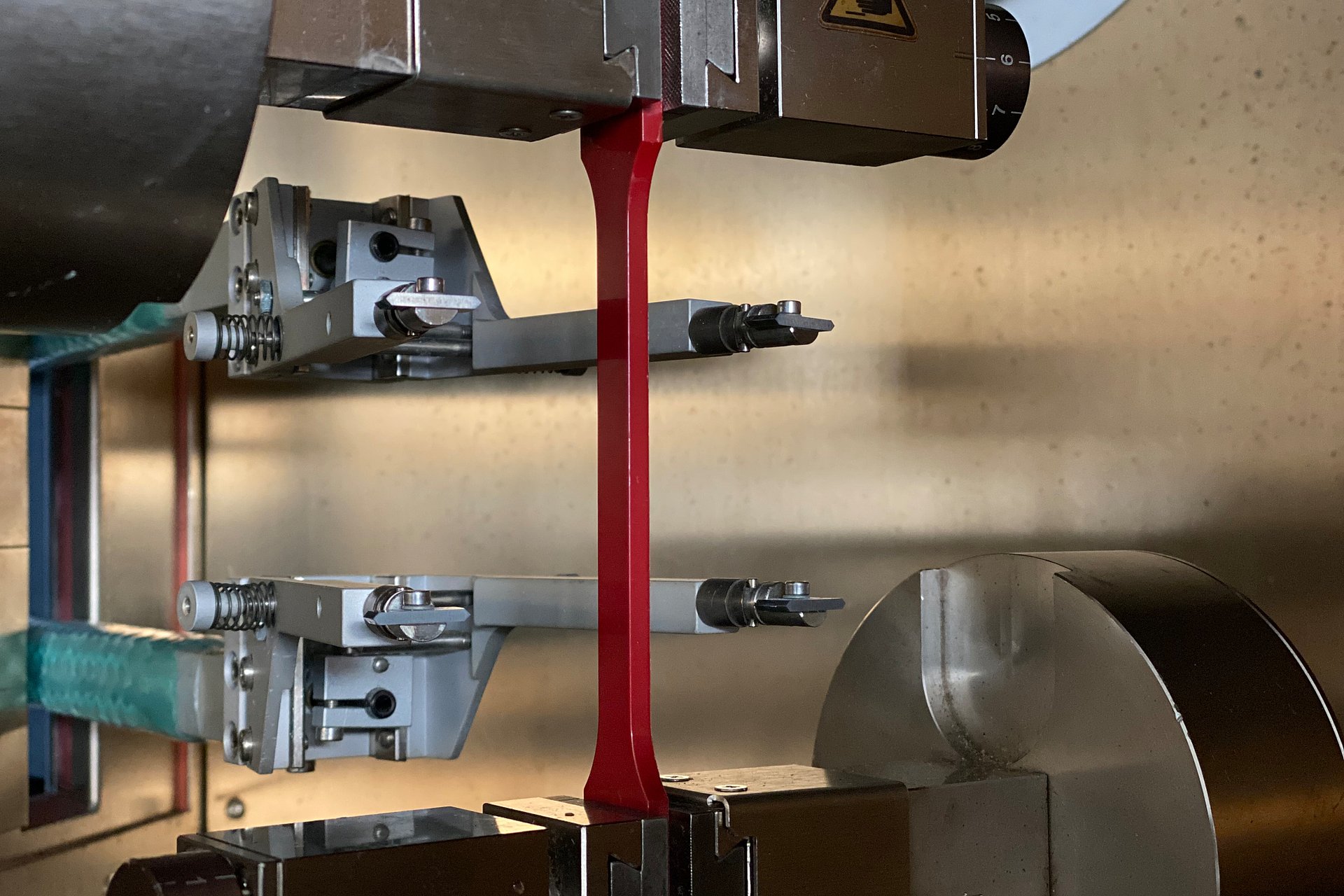Thermal stress analysis
Thermal stress analysis TSA examines the stress behaviour of a material under temperature load.
The test specimen is clamped on both sides (stress-free) and the distance between the two clamps is kept constant during the test.

Fundamentals
This measuring method is particularly suitable below the glass transition temperature Tg of the material for evaluating the influence of global or local residual stresses in the component and above the glass transition temperature Tg for detecting structural changes.
To observe the global strain behaviour, a mechanical extensometer can be applied in a selected range of the gauge length. To observe the local strain behaviour of several selected areas of the material, a laser extensometer is used. For this purpose, the test specimens are provided with a marking, the reflectors, and the change in length is registered during the test.
Sample preparation
- Removal of test specimens from plates or components
- Conditioning at standard climate
- Priming of the test specimen with black matt varnish when using laser extensometry
- Application of reflectors for laser extensometry
Test conditions
- Testing in the temperature range from -40 °C to 250 °C
- Temperature regime freely selectable
- clamping on both sides for TSA
- mechanical extensometer (capacitive extensometer) or
- laser extensometer
Dipl.-Wirt.-Ing. Anja Berthold
Phone: +49 (0)3461 30889-56
Write e-mail
